| We finally reached the Wood Islands Ferry to Caribou,
Nova Scotia. But there was a long queue so we had to wait two hours for the
next one. | 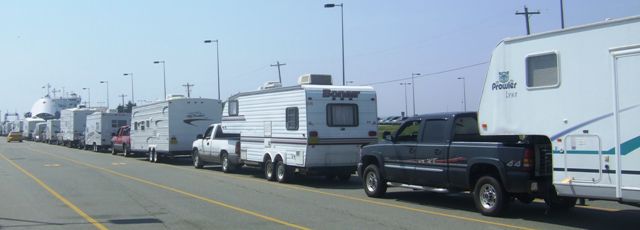 |
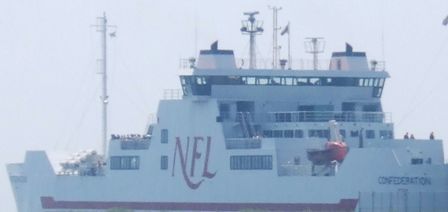 |
This is one of the two ferries (Confederation) leaving (without us) for the
75 minute journey. It was built in 1993. We would be catching the other ferry,
Holiday Isle, built in 1971 for CNR, she carries 485 passengers and 155
vehicles and weighs 2775 tons. |
| Looking back to the fishing pier with its fishermen's
huts and lobster pots as we leave Wood Islands. This view really shows up
the low red cliffs and sand that are typical of PEI. | 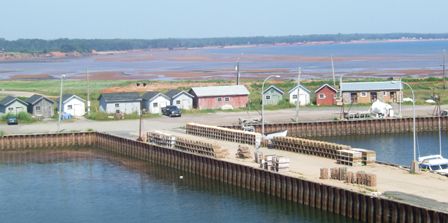 |
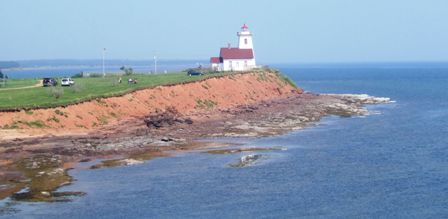 |
The last lighthouse - we can't see the coast on Nova Scotia as we leave. |
| But there is music for the journey. The ferry was full
and they were good and well appreciated. | 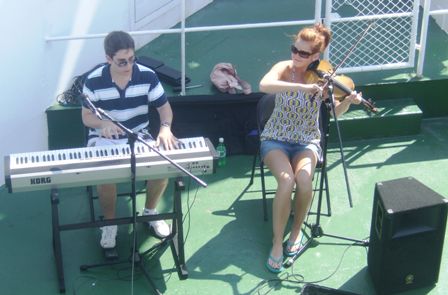 |
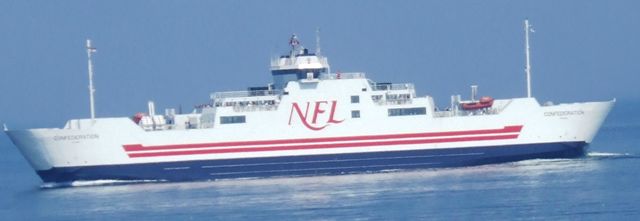 |
Halfway across and we passed the MV Confederation returning for another
load. |
| We camped at Pictou on Nova Scotia just by the ferry
terminal. In the morning we went into the town where the first Scottish
settlers arrived in 1773 aboard the Hector. This is a replica which took ten
years to build starting in August 1990. The original was built in Holland
and was of a type known as a 'Boot' ship. There were 33 families on board
but many followed and Pictou became the birthplace of New Scotland. | 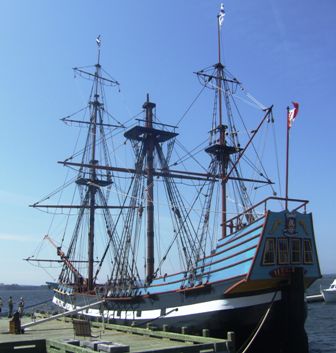 |
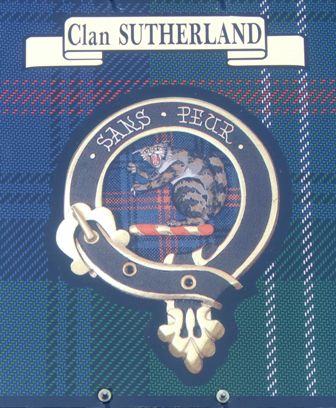 |
Most of them came from the Western Isles so there is a preponderance of
Highland names like Sutherland and MacDonald. |
| The Donald Clan came from the islands and there is a
monument to them at the Pictou rotary (roundabout). | 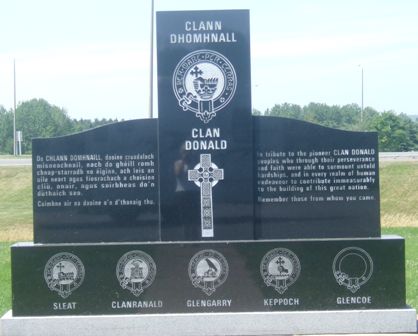 |
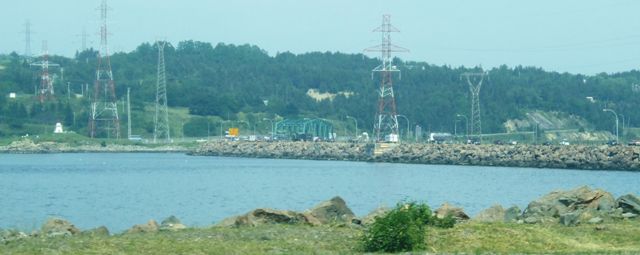 |
We travelled north towards Cape Breton Island. This is connected to the Nova
Scotia mainland by a causeway. Cape Breton Island is on the far side. |
| We were heading for North Sydney but we decided to
turn off the main road and take a scenic route. At Iona (another one) we
came to a Highland Village. Most of the buildings are original but have been
moved to this site to both preserve and display them. The interesting bit is
that all the signs are also in Gaelic. At the date of Confederation Gaelic
was the third most widely spoken language in Canada. Over 100,000 people in
Nova Scotia spoke Gaelic. Today only about 2,000 Gaelic speakers remain,
although there are now various initiatives to encourage its use. | 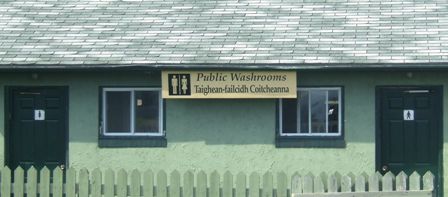 |
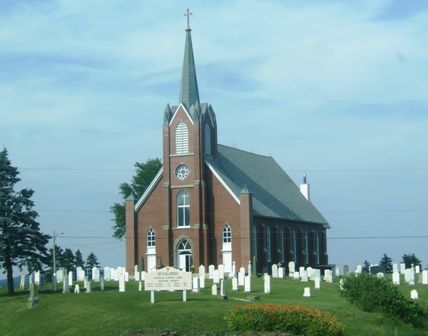 |
Every village has its church, but this seems a particularly fine example.
They, and their graveyards, are all well maintained. |
| At Iona we crossed the end of one of the 'lochs'. This
is actually two bridges. This is the railway bridge (yes, there is a
railway) and there is a higher road bridge behind it. | 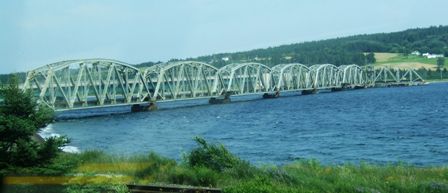 |
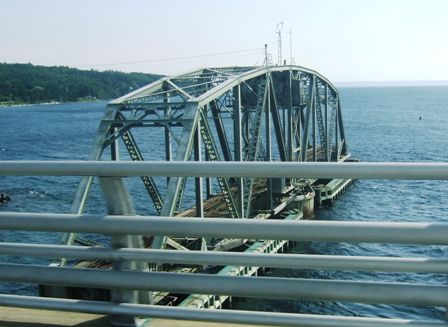 |
At the far end of the railway bridge is a swing section to allow boats
through, since it is much closer to the water than the road bridge. |
|